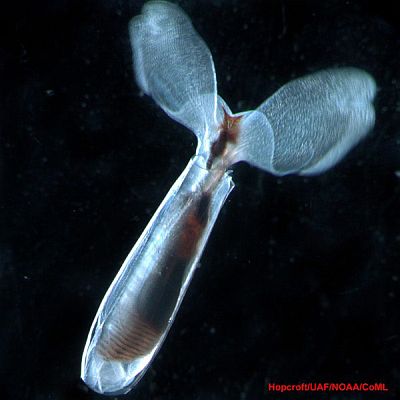Discover new species of creatures like transparent spaceships in the deep sea

Duobrachium sparksae (incertae sedis Ctenophora Tentaculata Cydippida): A new genus and species of benthopelagic ctenophore seen at 3,910 m depth off the coast of Puerto Ric
https://www.jstage.jst.go.jp/article/pbr/15/4/15_P150401/_article/-char/en
Scientists Confirm Entirely New Species of Gelatinous Blob From The Deep, Dark Sea
https://www.sciencealert.com/bizarre-jelly-blob-glimpsed-off-puerto-rican-coast-in-first-of-its-kind-discovery
Ctenophore In Deep Sea Off Puerto Rico | The Inertia
https://www.theinertia.com/environment/new-species-of-gelatinous-ctenophore-discovered-in-deep-sea-off-puerto-rico/
NOAA scientist Mike Ford describes 'Duobrachium sparksae' in the following movie.
Combing the Deep: NOAA's Discovery of a New Ctenophore --YouTube
On April 10, 2015, Mike Ford was on board the NOAA exploration vessel Okeanos Explorer as a member of the science team.

At that time, Okeanos Explorer was moored about 40km off the coast of Puerto Rico.

Okeanos Explorer was exploring the deep sea by using the remote-controlled unmanned spacecraft '
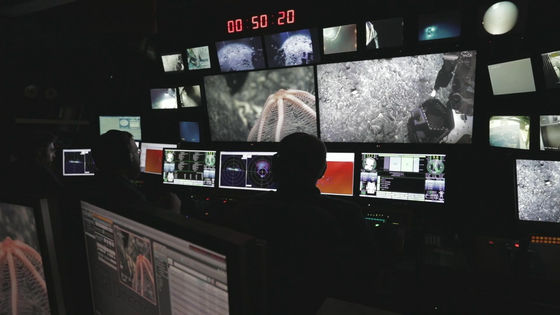
Deep-sea footage taken by Deep Discoverer is sent from Okeanos Explorer to NOAA headquarters via satellite communications in near real time.
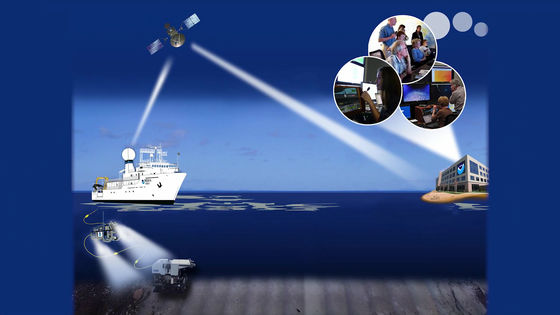
Deep Discoverer exploring the deep sea
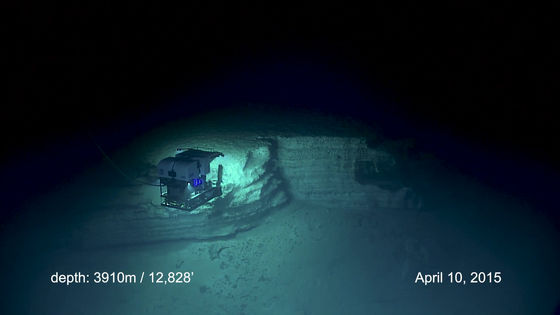
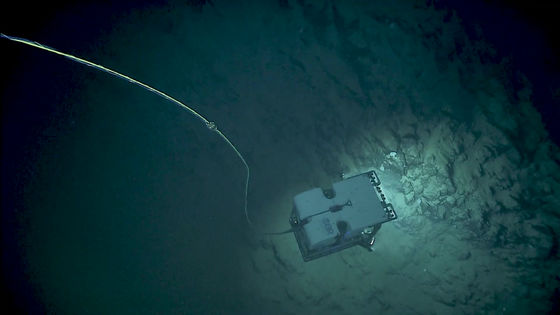
Deep Discoverer explored the
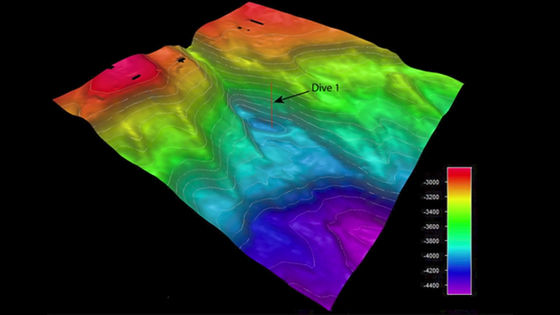
Here Deep Discoverer encountered a mysterious gelatinous creature.
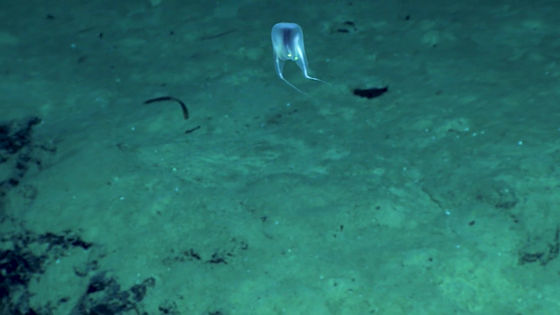
An image of a mysterious creature captured by Deep Discoverer equipped with a high-resolution camera system. In addition, the high-resolution camera system installed in Deep Discoverer seems to be able to capture creatures with a body length of less than 1 mm.

You can see that the mysterious creature looks like a comb animal such as a jellyfish and has something like
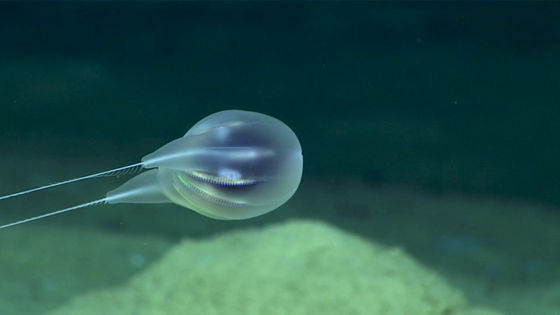
'When I saw this mysterious creature, I thought it was a very strange creature,' said jellyfish expert Allen Collins. 'It looks like a string hanging from a round balloon-like body. However, this mysterious creature has two tentacles instead of a string. I have never seen a combed animal like this. I think this is a new species. ' I will.
Deep Discoverer is equipped with a laser that can be used to measure the exact length of deep-sea creatures and objects.

As a result of analysis based on laser information, the body length of the mysterious creature is about 6 cm.
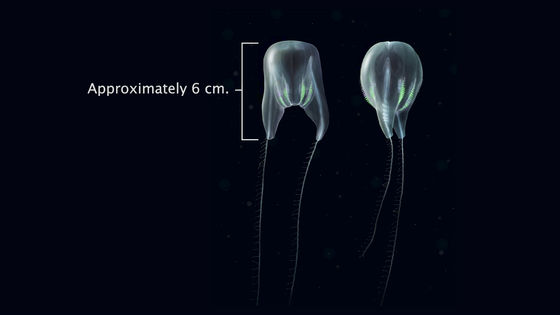
And the length of the tentacles extending from the body is about 30-56 cm. Three of these mysterious creatures have been discovered, and it is said that they were discovered within 2 meters of the seabed.
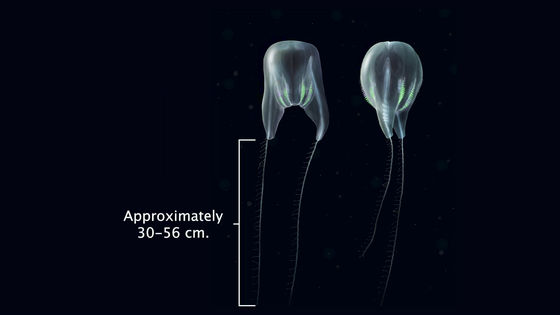
Usually, when a new species is found, a sample is taken and multiple analyzes are performed in the laboratory. However, as of 2015, Deep Discoverer did not have equipment for sampling, so it seems that analysis of mysterious creatures will depend only on high-resolution movies shot by Deep Discoverer.

It seems that it is difficult to classify new species based only on movies and photographs, which have been increasing in recent years, because conventional taxonomy relies heavily on specimens such as those stored in museums. In the case of the mysterious creature discovered by Deep Discoverer, it took five years to recognize it as a new species. This creature, which has a unique shape like a transparent spaceship, is named 'Duobrachium sparksae' and is classified as a kind of comb animal. In addition, the research group succeeded in shooting three high-resolution movies that captured Duobrachium sparksae, so he said that he 'did not receive any backlash' to certify it as a new species.
Collins said of the Duobrachium sparksae, 'I want the Duobrachium sparksae to be discovered again, and to be successfully sampled and analyzed for genetic information.' There are as many as 250,000 known species, so the next discovery of Duobrachium sparksae can take years, decades, or even a century or more. '
Related Posts:






